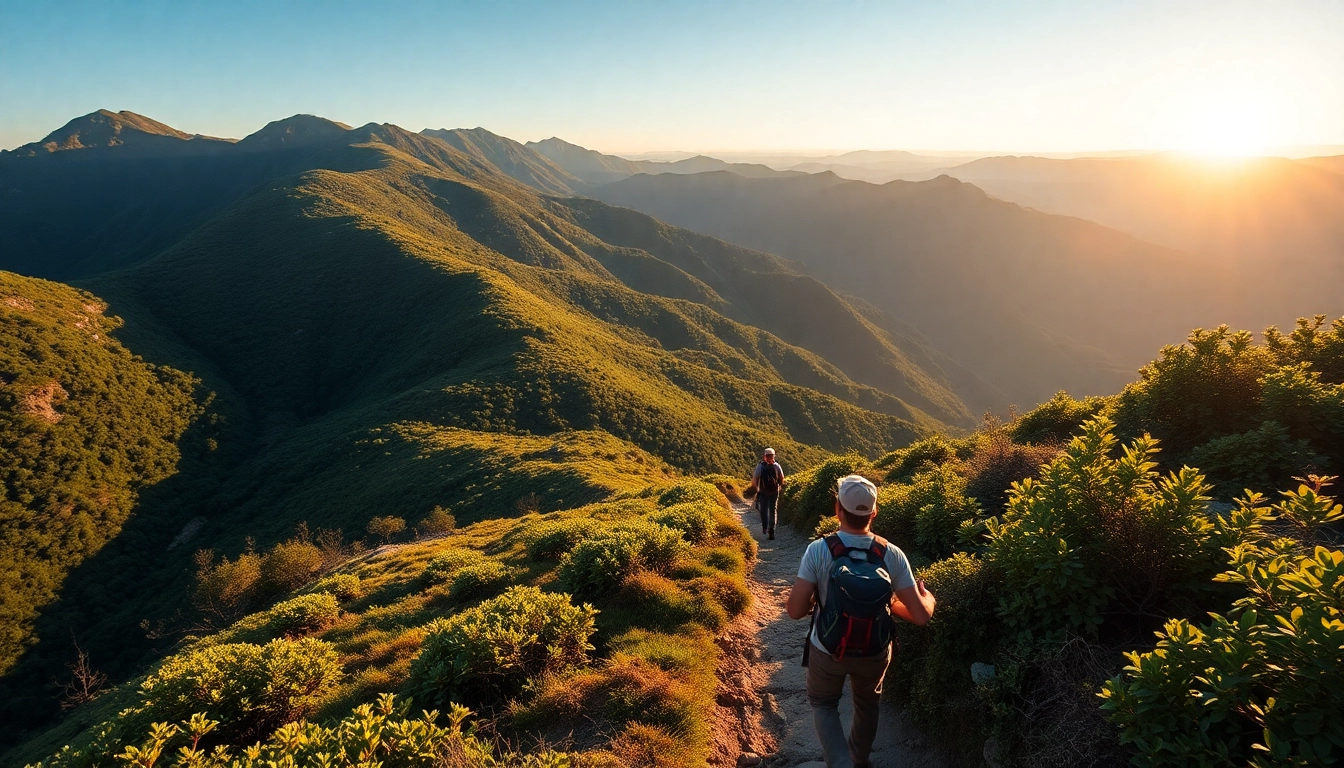Understanding Hiking: Definitions and Key Differences
What Is Hiking? Basic Concepts and Origins
Hiking is a widely appreciated outdoor activity involving long walks through natural terrains, such as forests, mountains, trails, and countryside. Unlike casual walking, hiking emphasizes traversing areas that challenge an individual’s physical endurance while offering an immersive experience with nature. The roots of hiking can be traced back several centuries in Europe, where it initially emerged as a leisure activity among the upper classes seeking to explore scenic landscapes. Over time, hiking evolved into a popular form of recreation and fitness accessible to all ages.
In modern contexts, hiking serves multiple purposes: it is a form of exercise promoting physical health, a method of mental rejuvenation, and a means of connecting with nature. Participants typically hike on designated trails or footpaths, which are maintained to varying degrees depending on location and usage. Whether in national parks, mountain ranges, or rural environments, hiking allows individuals to unwind, explore diverse ecosystems, and appreciate the beauty of the natural world.
For those interested in starting their outdoor adventures, understanding the essentials of hiking—its definition, benefits, and requirements—can be invaluable. To learn more about the fundamentals of outdoor activities like hiking, check out this comprehensive guide on hiking and related outdoor pursuits.
Hiking vs Trekking: Differentiating the Outdoor Activities
Though often used interchangeably, hiking and trekking are distinct activities with different scopes, durations, and levels of complexity. Understanding these differences ensures proper preparation and enhances the experience for enthusiasts and beginners alike.
Hiking generally refers to a walk of moderate or daily length, typically lasting a few hours at most. It takes place on well-marked trails or footpaths, often in parks, forests, or mountain regions. The terrain is usually manageable for recreational users, with minimal equipment needed. Hiking is accessible, suitable for families, and emphasizes enjoyment of scenery and physical activity.
Conversely, trekking involves multi-day journeys through remote or rugged terrains, often requiring specialized equipment, navigation skills, and physical endurance. Trekking may include crossing mountain passes, deep forests, or desert regions, often involving camping overnight. It is associated with adventure tourism and offers a more intense, immersive experience of untouched nature.
For practical purposes, think of hiking as a day trip or short excursion, while trekking encompasses extensive expeditions requiring meticulous planning. For a deeper understanding of these outdoor activities, including their respective challenges and gear requirements, refer to this insightful comparison on the difference between hiking and trekking.
Common Misconceptions About Hiking in Indonesia
In Indonesia, particularly in popular tourist destinations like Lombok, many misconceptions surround the activity of hiking. Some believe that hiking is solely for the experienced or those with professional training, which discourages beginners from trying it. Others assume that hiking only involves mountain climbing, neglecting the diversity of trails available — from gentle forest walks to challenging mountain ascents.
Additionally, there is a misconception that hiking requires expensive equipment or extensive preparation, whereas most beginner-friendly trails demand minimal gear. Local perceptions sometimes underestimate the health benefits and accessibility of hiking, reinforcing the notion that it’s a strenuous activity unsuitable for casual participants.
Breaking these misconceptions is crucial for promoting outdoor activity participation across all demographics. Emphasizing that hiking can be tailored to individual fitness levels and that safety protocols are straightforward can encourage more widespread engagement. As Indonesia boasts numerous scenic spots perfect for hiking—such as Mount Rinjani, Senggigi’s hills, and lesser-known trails in Lombok—it’s essential to dispel myths and promote responsible outdoor recreation.
For inspiration and practical tips, explore the variety of hiking adventures available in Indonesia and experience the health benefits firsthand.
Preparing for a Memorable Hiking Experience
Choosing the Right Hiking Equipment and Gear
Proper equipment is fundamental for ensuring safety, comfort, and enjoyment during your hike. For beginners, the essentials include a sturdy pair of hiking shoes—preferably waterproof and with good ankle support—comfortable clothing suitable for weather conditions, a backpack with enough capacity for your supplies, and navigation tools such as maps or GPS devices.
Additional gear may include a hat and sunglasses for sun protection, a first aid kit, sufficient water and snacks, and weather-specific items like rain jackets or layered clothing. Investing in quality hiking boots and socks can prevent blisters and injuries. For advanced hikes, specialized equipment such as trekking poles, headlamps, and camping gear become necessary.
To help you choose appropriate gear, consider consulting local outdoor stores or experienced guides familiar with the terrain you plan to explore. Remember, lightweight and functional gear enhances mobility and minimizes fatigue, especially vital when navigating diverse Indonesian landscapes.
Planning Your Route: Safety and Accessibility Tips
Effective route planning is critical for a successful hike. Start by researching trail difficulty levels, distance, elevation change, and estimated hiking time. Utilize reliable maps, official park guides, or local authorities’ information to identify accessible pathways suited to your fitness and experience.
Always inform someone about your itinerary and expected return time. Many Indonesian parks and trails have designated entry points and checkpoints; understanding these can aid in navigation and emergency response. Ensure the trail is open and safe during your planned visit, considering weather conditions or seasonal closures.
For added safety, consider hiring a local guide who knows the terrain well, especially for remote or challenging trails. This not only ensures safety but also enriches your experience with local insights and cultural context.
Physical Preparation and Fitness Considerations
While hiking is accessible to most, building a base level of fitness enhances endurance and reduces fatigue. Incorporate cardiovascular exercises such as walking, jogging, or cycling into your routine weeks before your hike. Strengthening your leg muscles with squats and lunges, along with core workouts, helps maintain stability on uneven terrains.
Additionally, practicing hiking with weighted backpacks, known as “training hikes,” can simulate real conditions. Prioritize flexibility and stretching to prevent injuries. For specific health considerations, consult healthcare professionals before undertaking strenuous hikes, especially if you have existing health issues.
Remember, gradual increases in intensity and duration prevent overexertion, making your Indonesian hiking adventure safer and more pleasurable.
Top Hiking Destinations in Indonesia
Must-Visit Trails in Lombok and Surrounding Areas
Lombok is renowned for its stunning landscapes and diverse hiking opportunities. The iconic Mount Rinjani, Indonesia’s second-highest volcano, attracts trekkers seeking challenging ascents and panoramic crater views. Rinjani’s trails are suitable for experienced hikers, but there are easier routes along its foothills for beginners.
Other popular trails include the Benang Stokel Waterfall Trek, offering lush jungle scenery and cascades, and Gunung Pengsong, which features scenic rice terraces and panoramic perspectives of Lombok’s coast.
For less strenuous options, consider coastal walks along Senggigi Beach or exploring the unique volcanic landscape around Mount Batu Kima. These routes provide an excellent introduction to the natural beauty of Lombok’s diverse terrain.
National Parks and Nature Reserves for Hiking
Indonesia’s extensive network of national parks and reserves offers ample opportunities for hikers. Komodo National Park, famous for its Komodo dragons, also boasts trails through rugged islands teeming with unique wildlife and vibrant marine environments. Gunung Leuser National Park in Sumatra offers forest trails rich in biodiversity.
In Java, Ujung Kulon National Park provides dense jungles and pristine beaches, ideal for eco-friendly eco-tourism. Bali’s West Bali National Park features coastal paths and birdwatching opportunities.
These protected areas prioritize conservation and sustainable tourism. Before visiting, familiarize yourself with regulations, permit requirements, and trail conditions to ensure an environmentally responsible experience.
Hidden Gems and Off-the-Beaten-Path Trails
Beyond well-known destinations, Indonesia hides secret trails waiting to be explored. In Lombok, the Tiu Teja Waterfall Trek leads adventurers through bamboo forests and rural villages to a stunning waterfall—a perfect escape from crowded tourist spots.
In Sulawesi, the Lore Lindu National Park offers less-traveled paths amid rich flora and fauna. Similarly, the remote Sumatra rainforest provides unique opportunities for wildlife encounters and pristine wilderness.
Engaging with local guides and eco-tour operators can help uncover these lesser-known trails, offering authentic experiences and supporting community-based tourism initiatives.
Health Benefits and Best Practices for Hikers
Physical and Mental Benefits of Regular Hiking
Engaging in regular hiking delivers a multitude of health benefits backed by scientific research. Physically, it enhances cardiovascular health, strengthens muscles, boosts stamina, and promotes weight management. The weight-bearing nature of hiking improves bone density, reducing osteoporosis risks.
Mentally, hiking reduces stress, alleviates symptoms of anxiety and depression, and improves overall mood. The exposure to nature has been linked to increased feelings of relaxation and rejuvenation, often referred to as the “nature therapy” effect.
Moreover, outdoor activities promote better sleep patterns and enhance cognitive function. These benefits make hiking an ideal activity for holistic health, especially amid Indonesia’s abundant natural landscapes.
Safety Tips and Common Challenges During Hikes
Safety is paramount in outdoor adventures. Be prepared for challenges like sudden weather changes, rough terrains, and wildlife encounters. Always carry an emergency kit, sufficient water, and a communication device. Check weather forecasts before departure and avoid hiking during storms or heavy rains.
Challenges such as fatigue, dehydration, or getting lost can occur; plan your pace, take regular breaks, and stay on designated trails. Respect wildlife and maintain a safe distance. For night hikes, use proper lighting and inform someone of your plans.
In Indonesia, challenging terrains and unpredictable weather demand extra vigilance. Training, proper gear, and local knowledge are your best tools for a safe and enjoyable hike.
Environmental Responsibility and Leave No Trace Principles
Responsible hiking entails protecting the environment for future generations. Follow the Leave No Trace principles: minimize your impact by packing out all trash, staying on established trails, and avoiding disturbance to flora and fauna. Use eco-friendly products and refrain from picking plants or disturbing wildlife.
Respect local communities and their traditions. Support eco-tourism initiatives and contribute to conservation efforts through responsible behavior and donations. Promoting awareness ensures that Indonesia’s pristine natural landscapes remain vibrant and accessible for all.
Enhancing Your Hiking Skills and Community Engagement
Beginner Tips for Safe and Enjoyable Hikes
Starting your hiking journey can be straightforward with some foundational tips. First, choose beginner-friendly trails with clear signage and manageable difficulty levels. Always start with shorter hikes to build endurance before attempting longer or more challenging routes.
Wear appropriate footwear and clothing, and carry essentials like water, snacks, and a basic first aid kit. Learn basic navigation skills, such as reading maps and compasses, or familiarize yourself with GPS devices.
Listen to your body—rest when needed, stay hydrated, and avoid pushing beyond your limits. Engage with local hiking communities for shared experiences and safety advice.
Advanced Techniques and Trail Navigation
For experienced hikers seeking to hone their skills, mastering trail navigation, understanding topographical maps, and using GPS devices are critical. Techniques such as pacing, energy management, and weather planning can elevate your hiking efficiency.
Advanced hikers often explore multi-day expeditions, requiring skills in camp setup, Leave No Trace adherence, and contingency planning. Participating in courses offered by local outdoor clubs or guides can deepen your knowledge.
Regularly updating your gear, learning about local flora and fauna, and practicing environmental stewardship contribute to safer and more rewarding adventures.
Joining Local Hiking Groups and Events in Indonesia
Becoming part of local hiking communities fosters camaraderie, learning, and safety awareness. Many Indonesian regions host organized hikes, cleanup activities, and trekking expeditions. Joining these groups can enhance your skills, introduce you to diverse terrains, and support sustainable tourism.
Engage through social media, local adventure clubs, or tourism offices to find upcoming events. Respect local guides’ expertise and cultural sensitivities. Community involvement also promotes environmental conservation and responsible travel practices.
Exploring with a group is not only safer but often more enjoyable, enriching your overall hiking experience in Indonesia.

